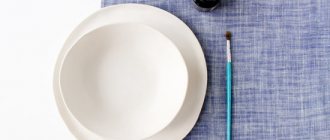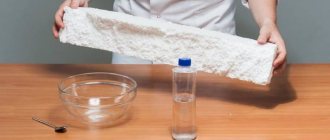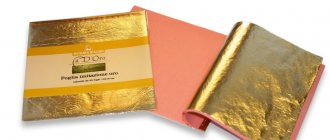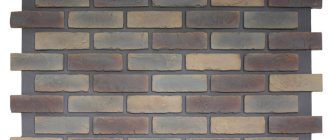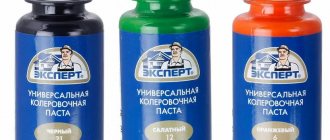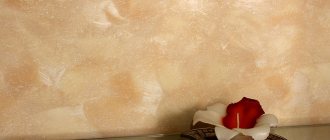The spray gun is used for painting any surfaces. The paint applies smoothly, its consumption is minimal, and little time is required to work. But in order for the quality of the painted surface to be excellent and the paint itself to be consumed as little as possible, adjustment of the spray gun is necessary. Why exactly is this being done? For each type of dye, the conditions for feeding the mixture are different. The pressure and spray of paint can be completely different. Therefore, before using the equipment, it is necessary to correctly adjust the spray gun and conduct a test to determine its suitability for work. After this, you can safely start coloring; it won’t take much time.
Basic rules for adjusting the spray gun
Be sure to adjust the equipment before starting work. Otherwise it will not work properly. If adjustments are not made, the paint consumption will be too high and the quality will decrease. To make adjustments, special adjustment screws are used. They allow you to set the required size of the torch for painting and the shape of the spray pattern. For adjustment, a special test is used, i.e. applying a coloring composition to a sheet of paper or drywall.
The passage hole and the amount of paint to be sprayed are pre-selected. It is necessary to choose at what distance the equipment should be kept, how to dilute the composition so that it is not too liquid or thick. You can set the spray pressure. It all depends on what kind of paint is used for the job. Typically the operating pressure is 3-5 bar, but individual compositions may have their own requirements. During this adjustment, the shape of the cone can be changed.
In order for paint consumption to be economical, it is necessary to determine not only the supply, but also the degree of its dilution. Only test staining is used, since other methods cannot obtain an accurate value. It is necessary to carefully examine the paint stain, its quality, intensity. This will allow you, in just half an hour, to accurately dilute the paint for use, determine the distance and other indicators. If the paint is too liquid, the stain will have drips and will not be of good quality. To avoid such situations, you must first dilute a small amount of paint, and not all at once. In this case, it will be possible to eliminate unnecessary costs.
Return to contents
Performance tests
To properly adjust the spray gun, it is necessary to carry out a number of tests, which are not very complicated. This will increase productivity and minimize paint consumption.
Such tests include:
- checking the quality of paint spraying;
- checking for the torch imprint, its correctness;
- checking the uniformity of paint distribution.
The spray quality test is simple. It is necessary to apply a strip of paint using a spray gun to a piece of drywall. After this, you can evaluate the size of the droplets and the uniformity of the stripe application. The stripe itself will be most intense in the center, and towards the edges it will become less uniform.
The shape of the imprint for a torch is determined differently. You need to hold the spray gun on at a distance of 15-20 cm from the surface for a second. If the paint print is smooth and well defined, then the equipment is adjusted normally. If there are numerous splashes around, then the pressure is too high and needs to be reduced. If the spot is uneven, then the pressure is insufficient or the holes are clogged.
Even distribution of paint is also important to avoid drips during application. If they are, then most likely the pressure is insufficient. The spray gun is configured as follows during testing:
- It is necessary to ensure that the nozzle and all holes are free of paint and correspond to the type of paint composition.
- After this, a sheet or piece of drywall is attached in a vertical position (a piece of 50*50 cm is sufficient).
- The pressure is set as required by the instructions.
- After this, a test strip is painted so that it can be evaluated and adjusted.
- Vertical and horizontal stripes are carried out to determine the uniformity of the applied paint and the quality of the surface.
After the assessment, the following conclusions are drawn:
- The torch is adjusted properly if the spot is symmetrical and even. The height and width of the resulting spot must fully comply with what is stated in the instructions. The paint is distributed evenly without splashing.
- The torch produces crescent-shaped stripes. This indicates that the nozzle is dirty or damaged, as is the center hole or side holes of the air special head.
- When turned on, the torch takes the shape of a figure eight. This means that the paint is liquid or high pressure is applied, it must be reduced.
- Intermittent torch. This is a sign that there is little paint left in the tank; the level needs to be checked. Air may have gotten into the channels that supply paint. In this case, they need to be cleaned. The tank vents are dirty and need cleaning.
- The torch is supplied in the form of a drop. In this case, the spray gun is held incorrectly relative to the surface. The nozzle may also be dirty.
- The torch is issued in the form of an ellipse. In this case, thick paint is used or the supply is large and the operating pressure is too low.
Return to contents
Possible problems and solutions to the problem
A spray gun is a simple piece of equipment, but such a tool can break or begin to work incorrectly. There are few such cases, but you need to be aware of how you can repair the equipment yourself. Among the most common problems when working with a spray gun are:
- The air cap may be damaged, as indicated by its center hole. It is best to immediately replace the entire broken unit if it cannot be cleaned. But before such a replacement, it is better to try to clean the hole; for this, a thin needle is used. When, after cleaning, the nozzle still does not produce a normal stream of paint, the unit is replaced. This is not so difficult to do; you just need to purchase a head suitable for a specific spray gun; it can be found in any hardware store.
- Defects were found at the side hole of the head. Most often this is due to the fact that it is clogged with paint if the spray gun is not washed after use. They are easy to clean; a needle is used for this.
- The nut on the guide bushing may be overtightened. If this happens, then you need to carefully clean the air valve stem, then shift the location of the torch and slightly loosen the position of the nut. The cleaning needle is carefully inserted into the head of the spray gun, the rod is replaced if necessary, but it can also be cleaned.
- The stroke of the paint feed lever is too tight. There can be several reasons for this problem, but most often it is a dirty air valve. It needs to be cleaned properly. If this measure does not work, then you should check the tension of the nut; perhaps it is too tight. Possible solutions include replacing the rod, cleaning the needle, or completely replacing the paint head.
During adjustment, the torch is set to a position directed along the axis of the device.
In this case, it may well be that the air cap and side holes are clogged. It is necessary to inspect them, and then, if necessary, thoroughly clean or completely replace the pneumatic head of the equipment.
It is difficult to convey the unpleasant emotions that overwhelm the owners of expensive perfumes when some problems arise with the bottle. The most common problems are the spray leaking or the spray bottle not working. Is it possible to repair the atomizer and save valuable perfume? What to do if the perfume doesn't spray? Do not rush to get upset, we will tell you a few secrets on how to restore the functionality of the bottle.
Popular breakdowns and repair methods
But, most likely, the reason is not a factory defect, but the inexperience of the user. Try adjusting the device using the adjusting screw. Attach a small sheet of whatman paper to the wall and try to improvise with paint, gradually opening the screw. Adjust the feed of paintwork without squeezing the trigger of the gun. The screw creates barriers to the movement of the needle, preventing it from opening the outlet for the paint composition.
If adjusting the pressure supply does not change the situation, you need to check whether the needle is dirty. Try cleaning the needle and nozzle, repeat the test on whatman paper. If the reason is a damaged mesh, it must be replaced.
Sometimes the spray gun refuses to work when the outlet for the paint composition is fully open. This may mean that you may be using a substance that is too viscous. If large lumps are visible in the mass, grind the coloring composition, then strain on a vibrating sieve. Try applying paint to the Whatman paper in the new consistency, adjusting the pressure with the screw.
Also check the condition of the air supply. After pouring paint into the tank and connecting to the air line, gradually add air pressure. In parallel with the increase in pressure, make periodic short “sprays” onto whatman paper.
Carefully read all instructions for storage and maintenance of the device of a particular brand. Try to wash all specified elements of the device immediately after use. Use materials recommended by your spray gun manufacturer.
Construction and painting tools are gradually being improved. The usual brush and roller are being replaced by a spray gun, which allows you to evenly paint large areas in a short time. The device is easy to use, but, like any equipment, sometimes it breaks down and stops performing its functions. What to do if the spray gun does not spray paint properly? Why, instead of a uniform release of paint, does “spit” fly out of the nozzle or just air blow?
Why doesn't my perfume sprayer work?
There are several reasons that can cause a spray bottle to break down. The most common are the following:
- clogged holes in the spray nozzle or spray tube;
- sticking or displacement of the ball inside the mechanism;
- air entering the tube, which takes the perfume from the bottle.
Don't fall into despair and throw away your favorite perfume. For any of these problems there is a correct solution. There are several ways to fix perfume if it doesn't spray. So let's try to fix the spray gun ourselves.
Clogged spray holes
The most common reason why a perfume atomizer does not work is that it is clogged. Most often it occurs in perfumes that are already several years old. The components of the aromatic liquid, passing through the spray nozzle, can settle inside. This oily substance eventually clogs the narrow opening of the spray.
What to do if the perfume stops spraying as a result of a blockage? To resolve this problem, you need to do the following:
- remove the spray button;
- soak it in alcohol, cologne or hot water to dissolve the blockage;
- clean the holes in the spray with a very thin needle;
- clean the tube pin with a wooden toothpick;
- Thoroughly blow out the mechanism or flush it several times.
After the cleaning procedure, you can return the nozzle to its place and check the operation of the sprayer. If it doesn't work well enough, repeat the cleansing process.
Ball sticking inside the dispenser
Another reason for the spray bottle to not work may be the sticking of a tiny ball located inside. This small part can get stuck and block the flow of perfume into the opening of the atomizer. Let's see what to do if the eau de toilette doesn't splash.
In this case, you can use the following effective method:
- place the perfume in the freezer for 1-2 hours;
- then check the operation of the sprayer.
It often happens that sub-zero temperatures have a positive effect on the ball. As a result, the sprayer begins to work obediently.
Air getting into the tube
If the perfume does not spray, there may be air in the spray tube. To restore the functions of the bottle you need to:
- remove the sprayer by pulling it up. Below it is a short plastic pin;
- turn the bottle over and place it on a hard surface;
- Gently press the pin to the surface so that it is pressed into the bottle. Repeat several times if necessary;
- a few drops of perfume will flow out, but the air bubble should leave the tube;
- then put the spray bottle back on.
If all restoration work is unsuccessful, the sprayer may have broken completely. Then it is better to replace it by removing it from another used bottle.
Backup options for saving perfume
If there are no positive results after the steps taken, it is better to forget about the beautiful bottle and try to extract your favorite scent. What to do when the perfume spray bottle is completely broken? In this case, you will have to do the following:
- remove the valve part of the spray using pliers or a can opener;
- pour the perfume into a special atomizer or other bottle.
For those who don't know. An atomizer is a glass or plastic container with a screw-on atomizer. It can have different volumes from 5 to 100 ml. The atomizer can be purchased at any perfume department that sells perfume on tap.
If you can’t remove the valve and the dispenser is irreparably broken, you can use another option:
- take any jar, wash well with water, wipe dry, rinse with alcohol;
- place the inverted perfume into the container, having first removed the atomizer;
- Press the tube to the bottom of the jar to release a strong stream of perfume;
- then collect the contents with a syringe and pour into the atomizer.
OK it's all over Now. We wish you success. We hope that our own experience will help revive your bottle.
And what should be the imprint of the paint torch for correct, uniform spraying of paint. What to do if the shape of the torch does not correspond to the standard?
Today you will find out
Let us remind you that if the spray gun is in full working order and correctly adjusted, the spray torch should leave a trace of evenly applied paint on the tested surface, shaped like an elongated ellipse or rectangle with rounded edges. Its sides are smooth, without any depressions or protrusions, and the paint and varnish material is evenly distributed over the entire area of the print.
If the spraying process does not proceed correctly and deviations are observed in the shape of the torch imprint, first of all, do not panic - often the reasons for this are very trivial, for example, an unbalanced ratio of air supply to paint, or incorrectly selected. Of course, there may be more serious reasons, for example, clogging, damage or wear of the spray gun parts (air cap, nozzle, needle).
In any case, diagnosing the causes should always start small - perhaps a simple additional thinning of the paint or cleaning the spray gun will save you from buying a new air cap or nozzle.
Let's look at the most common deviations of the paint spray from the norm and figure out what measures need to be taken to eliminate them.
Tips for extending the life of your spray gun
A spray gun is a complex tool that requires careful handling. In order for it to work for a long time without breakdowns, you must follow the following rules for caring for the device:
- Clean immediately after finishing painting work. For this purpose, the tank of the device, after removing the coloring material, is filled with a solvent having a composition similar to the dye used, and after that the device is turned on and used on the unnecessary surface. The contents of the tank released under pressure will give a good cleaning of all valves and hoses.
- Never use a solvent that may cause a “chemical conflict” with the staining solution used. Curled paint residue may cause mechanism failure.
- After finishing washing, the device must be thoroughly ventilated, and the container must be left open for a short time to evaporate the remaining solvent.
- The spray gun with the coloring composition inside can only be left for a short time, but before that, take the following measures to prevent the composition from drying out: tighten the needle adjuster all the way and tightly close the hole to prevent air from entering the tank.
- Before refilling, the spray gun must be thoroughly blown out to remove condensation or accumulated dust.
Most paint sprayer breakdowns can be prevented by using the device correctly. But if breakdowns occur, many of them can be repaired yourself using repair kits, which include various sets of spare parts and components. Timely maintenance and proper care will help the instrument to serve its owner well for many years.
So this is the case. I was making repairs in the entrance (for noble aesthetic reasons and because I was sick of disgusting) the wall there was covered with such “lumpy” plaster. I'm tired of using rollers and brushes. Well, it’s inconvenient, the consumption is high and most importantly it takes a long time! I painted it with some kind of Tex acrylic paint - it's thick and non-opaque, but cheap and waterproof - just right. I read the forum - there is little information and it is fragmentary. The spray guns say you can't coat a piano with bullshit varnish. Well, we don’t need that, but that’s what we need for “fence” work. Although opinions mostly agree on “wasted money.” From the answers I found out that the driver is a green BOSCH with a ruby nozzle. Yeah. It currently costs 3000 rubles. No, this is not necessary, especially since the price is on average from 1000 to 2000. Then I came across the miracle of the Fiolent spray gun. And the description on the site really inspired me. And 2 ruby nozzles and not Chinese junk and adjustments and in general - the fiolent is still not a stern (their jigsaw made me very happy). For medium-precision work, their tools are usually strong and reliable. Moreover, it is written that you can work with thick acrylic paints with a 0.8 nozzle. The only alternative is a pneumatic spray gun, but this, of course, is no longer necessary because a compressor is needed. There is also some kind of homemade one, or one that a guy sells for 900 rubles, you can power it from an inflated chamber. In general, I’ll scour and find out here » > it’s in stock and costs only 1300 rubles. Hooray! I get ready and rush there with the thought of trying it out right away. The seller takes it out, offers to check it, fill it with water, I say, okay, let’s do it, although it’s not necessary (because somehow I’m not afraid of marriage, etc.). In general, it pours water and collects it and nothing splashes. It squeals like a wounded boar, grunts and barely spits. Assembling, disassembling, fiddling around, the seller doesn't care - he's completely stopped. Okay, give me another one - anything can happen; another similar piece of crap is taken from the display case. Almost no splashing. He pokes around and jokes (and I note that the sales guy is excellent and cheerful - not like the idiot from infracom) - apparently you will have to paint the fence with a brush. In short, nothing works. “I’m upset,” Elmos suggests, “I’m not enthusiastic, although the equipment is richer and more powerful. more and, most importantly, it sprays superbly into fog and the price is the same. But the nozzles are not ruby! But I want ruby and not made from China at all (but Elmos - xs (I mean spray guns - obviously not a spark)) and it’s a shame for the fiolent. As a result, the Elmos regulator gets jammed and neither here nor there. I brush “yes, apparently with a brush. " and I leave. I ended up painting the wall with a roller (acrylic 18mm pile). But I still have some kind of unpleasant aftertaste and I want a spray gun (because I still need to paint). I found this mega spray gun on the Elmos website (of course it’s far from pneumatic, but still)
Read also: Cathodic protection station is
model PG-65 Voltage (V/Hz) 220/50 Productivity (cm3/min) 400 Rated power (W) 120 Capacity (l) 1.2 Nozzle (mm) 0.8-1.2 Weight (kg) 1, 9 Standard equipment: Spray valve, bowl for determining paint viscosity, oil, 0.8 mm nozzle, bendable nozzle, double one and a half meter hose, fasteners
It can even suck straight from the bucket.
and fiolentushka is an asshole. here you go" >
Airless paint sprayer KR-260 Power 60 W Maximum output 260 g/min Viscosity up to 80 DIN-sec Nozzle diameter 0.6 and 0.8 mm Container capacity 0.7 l Power cord length 3.0 m Weight without nozzles 1.2 kg Equipment: nozzles 0.6 and 0.8 mm, viscosity meter
Type of tool: household The KR-260 paint sprayer is designed for AIRLESS spraying of a wide range of paints and varnishes of varying viscosity (up to 80 DIN-sec) for household and industrial purposes. Features: The plunger pair is made of high-strength, wear-resistant alloy, which increases the service life of the product. The metal swivel joint gives reliability and durability to the product. The nozzles have ruby wear-resistant nozzles, which significantly increase the service life of the product. Equipped with replaceable nozzles (0.6; 0.8) with ruby nozzles allows you to spray materials of various viscosities. Smooth adjustment of the amount of sprayed substance ensures dosage accuracy. The nozzle extension makes it possible to paint horizontal surfaces and hard-to-reach places. The suction filter prevents large paint particles from clogging the nozzles. Double insulation of the electrical part of the device allows you to avoid grounding, which makes it possible to connect the device to a household network. Consumer analysis: the KR-260 paint sprayer can work with modern construction paints, the manufacturer of which recommends an airless paint sprayer as one of the methods of applying paint, such as: 1. Modern water-soluble paints, which are currently widely used in construction for finishing the facades and interiors of houses. 2.Car body paint 3.Enamels, paints and varnishes for wood and metal 4.Polishing and glaze 5.Oil paints 6.Silver and bronze paint 7.Oils, preservatives and pesticides 8.Disinfectants Airless spraying eliminates the formation of air bubbles on the surface of the painted part, which gives a uniform, glossy surface. No special training is required to operate the product, which allows it to be used at home.”
In short, comrades, what is the further path of my electrical painting development? Pneumatic is all clear, but it is also clear that a compressor and an electric spray gun are different things. Maybe try fiolent or take this elmos?
Figure Eight and Double Eight Forms
A strong narrowing of the spray in the center usually occurs due to insufficient paint supply or too high spray pressure. For the same reasons, the torch can take the shape of a “double eight”. Such flame defects are more likely to occur when working with low-viscosity, low-solids materials than with high-viscosity materials.
The solution to this kind of problem can be to increase the supply of material using the appropriate regulator on the body of the spray gun or reduce the pressure at the inlet.
What is needed for repairs
Regardless of the operating principle of the inking mechanism, before you begin diagnosing and troubleshooting, you need to prepare the following tools and spare parts:
- a set of wrenches of various sizes;
- pliers;
- screwdriver;
- repair kit and other sets of spare parts.
A spare parts store for repair and construction equipment will be able to offer several options for repair kits to troubleshoot problems with spray guns. It could be:
- A standard repair kit consisting of several bolts and rubber seals (it is better to stock up on such repair kits in advance due to the fact that seals quickly become unusable when exposed to dyes).
- Specialized repair kit. The set includes spare parts for spray guns necessary to fix a specific problem or replace a failed part.
Read also: Steady rest for lathe 1m63
Excess paint in the center or at the edges
Most often, the cause of this type of defect is too strong a supply of material. Moreover, there is an interesting feature here: if in sprayers of a conventional system, with an excessive supply of paint, an excess of paint will be observed in the central part of the print, then on guns of the HVLP and LVLP systems, the material tends to be redistributed closer to the edges. Try reducing the paint supply and repeat the spray test.
An excess of material in the center of the torch can also be caused by too high paint viscosity or low inlet pressure. So be sure to check the viscosity of the paint material and install it at the inlet of the spray gun.
"Pear-shaped" or "banana-shaped"
A pear-shaped print with a thickening at the top or bottom is most likely caused by a clogged or damaged air cap, nozzle, or air passages. For the same reason, a displacement of the paintwork material to the left or to the right (“banana-shaped profile”) may be observed.
Here it is important for us to understand what exactly is clogged. To determine this, rotate the air cap 180° and repeat the “spray test”. If the print is also upside down, then the air cap is at fault. Remove it and wash with solvent (see poster at the bottom of the article). If the shape of the print has not changed, the reason is a clogged or damaged nozzle.
It is better to clean the air cap and nozzle with special brushes and needles, which are sold in separate kits specifically for washing the spray gun.
If such accessories are not available, you can use some kind of soft brush and a wooden stick (exclusively wooden!), sharpened for the small holes of the air cap, or a toothpick.
Never use metal objects (brushes, paper clips) to clean the spray gun. They can damage the head and nozzle!
Pulsating or trembling torch
If the torch vibrates, the jet becomes intermittent and unstable, and the paint and varnish material bubbles in the tank, there may be several reasons. As always, let's start small.
First of all, we note that such instability of the torch is often found on pistols with a lower reservoir. If you are using this type of gun, it may be that there is not enough paint in the tank or the sprayer is tilted too far, causing the pick-up tube to not be immersed in the paint material and not flowing properly. Add paint to the tank or rotate the paint pick-up tube 180° and spraying will proceed correctly again.
On top-tank guns, the jet may also become unstable when tilted too high (for example, when painting various hard-to-reach places), so try not to tilt the sprayer too much in such cases.
Also pay attention to the vent hole in the tank cap - it may simply be clogged. Clean it and the torch will stabilize again.
However, there may be more serious reasons. For example, a poorly tightened or damaged nozzle at the base. Unscrew it and check the threads for damage and “stuck” turns. If the nozzle is ok, just tighten it well.
The problem may also be with the spray gun needle - it is severely worn, clogged with dried paint residues, or is not fastened tightly enough. First, remove it and clean it if necessary. Lubricate the needle mounting oil seal with a special silicone-free (necessarily silicone-free!) lubricant. Sometimes such lubricant comes with the spray gun. Also lubricate the paint needle spring. If this does not help, replace the oil seal and tighten the fastening screw, but do not overtighten it, so as not to disrupt the free movement of the needle.
The reason may also be clogging of the paint supply channels. Thoroughly rinse the channels with a soft brush with the needle, air cap and nozzle removed, then blow off the spray gun with compressed air.
As you can see, in most cases the reasons for the irregular shape of the torch are easily eliminated. It is enough to correctly configure the spray gun and select the desired viscosity of the paintwork material. Also, do not forget to promptly and carefully care for your spray gun, respect and love it, and it will reciprocate your feelings.
Both beginners and experienced craftsmen often encounter the problem that the airbrush spits, spattering the paint unevenly. We suggest you figure out why this happens and how you can fix such a device defect?
Malfunctions and how to fix them yourself
With your own hands, using a set of improvised tools, you can eliminate most problems with spray guns by simply cleaning the nozzle or installing replacement parts instead of those that have become unusable.
Handheld device
The following malfunctions may occur with manual paint sprayers:
- The color mixture begins to bubble in the tank, but is not supplied to the nozzle. This can happen if the suction valve is clogged. In this case, you can disassemble the unit with your own hands, rinse, clean the valve, and after cleaning, install it in place. Or install a new valve from a set of replacement parts.
- Dye is supplied but not sprayed out of the nozzle. There may be two reasons in this case:
- The paint has large particles that clog the needle and nozzle. To eliminate this problem, you can clean the parts or install new spare parts, and grind the coloring solution using a paint grinder.
- The filter for the spray gun has failed. To fix this problem yourself, you need to remove the damaged filter and install a new one in its place.
Manual paint sprayer device
- The suction valve rises under pressure, but no paint comes out of the tank, and the unit does not spray the solution. This occurs because the suction valve is not seated tightly in its seat due to a clogged filter. To eliminate the malfunction, it is necessary to clean or install a replacement valve and filter.
- Paint under pressure is not supplied to the nozzle; it overflows through the pump cylinder. This indicates wear of the pump rod packing. Depending on the condition of the packing, it is necessary to either tighten the fastening nut or install a new packing.
- Weak pressure of the coloring solution during stable operation of the pump in a unit with a lower tank. The reasons may be:
- A small residue of material in the lower container when, when tilted strongly, the suction hose captures air and delivers the air-color mixture to the nozzle. There is no need for repairs, you just need to add material to the tank.
- The hole in the container through which outside air enters is clogged. Then you need to clean not only the air supply hole, but also additionally clean the pump hoses.
- The pump has stopped sucking paint. The reason for this can only be a pump cuff that has lost its quality. It can be softened in oil (if it is dry) or a replacement one can be installed (if it is worn out).
- The spray gun spits uneven streams of paint. This occurs when the spray gun nozzle has an outlet hole that is too large (more than 0.7 mm) due to a worn-out washer. To fix the problem, the washer must be replaced using a repair kit.
- Paint is leaking from the fishing rod faucet. There may be two reasons for the malfunction:
- The tap is poorly lapped. It’s easy to fix this problem with your own hands - just grind the faucet using tools.
- Weakening of the spring on the tap. It must be tightened or a replacement one installed using the necessary tools from the repair kit.
electrical appliance
With electric spray guns, unlike manual ones, not all problems that arise can be fixed with your own hands.
Some of them will require the services of an electrician to repair.
You can fix the following problems with your own hands:
Electric spray gun device
- The withdrawal of dye from the tank has stopped. As with a manual paint sprayer, to eliminate this problem you need to clean the suction valve.
- The solution is not supplied from the tank to the nozzle. To restore the flow of dye, you need to clean or replace the needle, nozzle and filter on the suction hose. Spare parts can be purchased separately or purchased as a ready-made repair kit.
- The pump does not supply the paint mixture to the nozzle sometimes due to incorrectly adjusted air pressure or paint supply; after adjusting these parameters, the device begins to paint normally.
- Excessive “bubbling” of the material in the container can be caused by air entering it due to improper operation or breakdown of the paint head. Using a set of spare parts, it must either be installed correctly or replaced.
- An extraneous knocking sound is heard in the tank when the pump is running, which can be caused by a foreign object getting into it or a piece of metal breaking off from a moving part (for example, a tooth broke off from a gear transmission). The container will have to be cleaned, and the object causing the extraneous noise will have to be carefully examined. If this is not a part of the mechanism, then you can put the tank in place, fill in the dye and continue working. But if you suspect that a part of a moving mechanism has broken off, it is better to seek the services of a specialist for inspection and preventive repair of the spray gun, rather than trying to fix the breakdown yourself.
Read also: Stepper motor what is it
Cleaning the spray gun nozzle
To eliminate the following problems in the operation of the electric spray gun, you will need to contact the services of an electrical equipment repair specialist:
- When the device is turned on, there is no noise from the electric motor. This happens if the fuses are blown or the switch is broken.
- When touching a unit connected to the network, current discharges are felt. Using the device in this case is life-threatening; it must be sent in for repair immediately. The cause of the breakdown is most likely the short circuit of the parts responsible for conducting current.
- If the body of the device becomes very hot during operation, timely repairs will prevent wear of the electric motor parts that occurs due to insufficient lubrication between them.
- The unit works, but the pressure gauge does not show that there is pressure. The cause may be a malfunction of the electric pump or pressure gauge.
About the design of the airbrush
Airbrushes are different and, first of all, they differ in the way they apply paint to the place where it mixes with air. Accordingly, the tank can be located at the top, bottom and side.
The last option is convenient because you can draw with such a device from almost any angle. The lower type of eyeliner, when compared with the upper one, involves the use of more liquid paint and higher pressure. However, many airbrush artists prefer this option due to the fact that it is less likely to spit when applying paint.
Types of feed control airbrushes:
- single - in such models, only the air flow is regulated by a trigger, and the air mixes with the paint, carrying it along with it. These airbrushes are the simplest and most inexpensive;
- double dependent ones allow you to simultaneously influence both the air and needle valves with one trigger, without stopping the drawing process;
- double independent ones are characterized by the fact that the lever can be moved in two directions, performing the function of supplying air and paint separately. Such devices are considered the most universal;
- automatic trigger (very easy to use and ideal for beginners).
The thickness of the line applied to the surface depends on the diameter of the nozzle used. The optimal size is 0.2 or 0.3 mm. If you need to replace the nozzle with a thinner one, then you also need to change the needle or sharpen the one that is standing. It should be noted that the thinner the nozzle, the more sensitive it is to the density of the paint. When replacing the needle, it is important that the oil seal fits tightly to it, otherwise paint may leak.
The airbrush nozzle can be threaded or conical. The first option is the most common. An airbrush with a threaded nozzle usually includes a special key for removal and fixation. The nozzle can be removed without much difficulty, but you should be careful when installing it, as it is quite fragile.
A cone nozzle is more convenient in this regard. To fix it, you just need to insert it into the socket and press the cap. The cone nozzle is also good because it is self-centering and does not require sealing.
The nozzle may become clogged due to a mismatch between the paint density and its diameter. This often results in the airbrush spitting. Therefore, the thinner the nozzle, the lighter the consistency of the paint that needs to be poured into the tank.
And let’s add a few words about oil seals, because if they are chosen incorrectly, then paint leakage is guaranteed. They should fit tightly, but it is better to choose Teflon ones, which last longer and are more resistant to aggressive nitro-containing paints.
Design and principle of operation
Before you start repairing an electric or pneumatic spray gun yourself, you need to understand how it works. Then it will be possible to disassemble the spray gun much easier, and the work process will not become a big problem.
Pneumatic and electric types of tools are considered the most popular for household and professional painting. They are similar in structure, but there are significant differences that affect how the composition is sprayed over the surface.
Electric type includes the following parts:
- An electromagnetic element that is responsible for the attraction of the bar;
- An oscillating bar, which is attracted by a magnetic part so that it pushes the piston further;
- The ink supply regulator helps limit the movement of the previous part;
- An airless or air-type spray nozzle is needed to spray solutions onto the substrate;
- The cylinder is the body part of the pump where the piston moves;
- It closes the valve and opens the paint supply;
- The suction tube, required to suck up the paint, can be supplemented at the tip with a filter;
- Piston spring. After moving the piston forward, it helps it return to the reverse position;
- The piston is responsible for sucking and releasing the dye from the spray gun;
- Start button;
- A fitting for connecting the tank to the device.
Coloring works as follows: when the button is pressed, an electromagnet operates and current begins to flow. At this time, the electromagnetic part pulls the bar and pushes it away. The bar movement parameter is controlled by a screw. The bar, pressing on the piston rod, starts its movement. Subject to the movement of the piston, paint is sucked out of the container, which is pushed into the valve area; when the piston moves forward, the valve opens and the paint and varnish material passes to the nozzle. From there the composition is sprayed.
The opposite movement created by the spring causes the valve to close and the solution is sucked from the container to the tube. This process is constantly repeated during operation of the device.
Remote compressors are also considered electric; their operation is excellent and more similar to pneumatic types.
Before you start repairing an electric or pneumatic spray gun yourself, you need to understand how it works.
The pneumatic type operates on compressed air and is designed as follows:
- Spray head that goes together with the nozzle. A nozzle for a spray gun, what is it, is the second name for the nozzle in which air and paint combine, which leads to the formation of small particles of the composition. Considered a nozzle, it is replaced to obtain an excellent size for more viscous solutions;
- You can make a tank for paint and varnish material, a tank for a spray gun yourself if there is an urgent need;
- The body where all the parts are connected;
- The locking screw is responsible for adjusting the paint supply level using the movement of the needle; there may also be an air supply regulator;
- A handle that allows you to comfortably hold the tool;
- The gasket serves as a seal in the device that moves the needle;
- Trigger, activates the needle;
- A locking needle, with the help of which the nozzle opening is opened and closed.
When the trigger is pulled, a valve opens to allow air to flow through a special channel to the air cap. Increased pressure moves the needle, the nozzle opens, and the paintwork is applied. The soil or other solution combines with air and a torch is formed, which is sprayed over the surface.
There is a holder for the spray gun, which makes it convenient to use the tool. In addition, many professionals use a spray gun stand.
The pneumatic type operates on compressed air.
Reasons why your airbrush spits
There are seven main factors that can cause an airbrush to spit. All these problems and ways to solve them are presented in this table.
| The reason why the airbrush spits | Troubleshooting options |
| Paint consistency is too thick | Place 2-3 drops of solvent into the device tank and check the operation of the airbrush |
| The airbrush is clogged | Remove the nozzle and needle and thoroughly clean the parts. This can be done by immersing it in the solvent used to thin the paint for five minutes. |
| Lumps and foreign inclusions in paint | Strain the paint material through a fine sieve or double layer of nylon |
| Insufficient or excessive pressure | Set the pressure level to 2 atm. |
| Too thin coloring composition | Add more paint to reduce the “wateriness” of the solution |
| Low strength of fastenings of airbrush elements | Check that everything is properly tightened and tighten the connections if necessary. |
| Worn seal, nozzle or needle | Replace parts with new ones |
Liquid paint in combination with a loose fit of the needle to the nozzle can lead to the coloring composition flowing into the crown and inevitably drying out at the tip of the needle. As a result, it becomes clogged, and the way out of the situation is to clean the crown and increase the level of pressure at the outlet. If the paint is thick, the same problems may occur, but you can try the same solution. A specific reason for the airbrush starting to spit can be indicated by characteristic smudges or the shape of the “spit.”
For example, if there is a blot in the form of a spider with thick legs or “cilia” as they are also called, then most likely the paint is too liquid or the air pressure is too high. If the device spits out small splashing dots, then this, on the contrary, indicates low pressure or the thickness of the paint composition.
Please note that the consistency of the paint should ideally resemble milk.
According to some users, Tamiya Airbrush Cleaner liquid cleans the needle well. Sometimes the cause of an airbrush malfunction may be that the needle or nozzle is in contact with the crown at the exit. As a result, this leads to the fact that some part of the paint and varnish composition gets onto the surface of the part being painted, and some begins to accumulate in the crown and thus clogs it. To avoid this, experienced airbrush artists recommend purchasing a device with a self-centering nozzle.
There are also situations when washing the airbrush does not help, and it continues to spit. In these cases, installing a tighter gasket on the nozzle threads may help. Some craftsmen obtain such small oil seals by dismantling old or even new simple gas lighters. The gasket is installed, the nozzle is screwed on, the seal is cut along the edges to size.
Prevention and care
Proper care can prevent your airbrush from spitting and extend its service life. Here are some useful rules:
- When replacing paint, clean the tank;
- After drawing, immediately disassemble and wash the airbrush thoroughly;
- You need to clean the device from acrylic compounds with a special cleaner or alcohol;
- To clean the nozzle, also use small brushes specially designed for this purpose.
Why doesn't the spray gun work? Many people, most likely, when faced with such a problem, take wrenches, screwdrivers of different sizes, disassemble the device and try to figure out what could be the cause of the breakdown, and most importantly, how to put it back together correctly, without the remains of the parts that make up the device.
This article invites you to get acquainted with what types of spray guns there are, the reasons for their frequent breakdowns, and how to troubleshoot problems yourself.
Any paint sprayer is a very delicate device and is not suitable for neglect, and breakdowns are not always the reason for the low cost of the tool; this can also happen with a well-known, well-established brand.
Very often the causes of breakdowns can be:
- Incorrect operation of the spray gun (see).
- Neglect of basic rules when caring for an instrument.
Before disassembling the spray gun into components and parts, you need to become familiar with the types of these tools.
They can be:
- Manual
(see). Such designs with a manual supercharger, in appearance and principle of operation, resemble a conventional pump. Here, pressure is injected into the cavity with paint independently, and then enters the nozzle.
Such a tool is most suitable for spraying liquid whitewash or a water emulsion of liquid consistency, and with a fully inflated tank it will only last for a few minutes of painting, after which you will need to pump up the pump again.
The main disadvantages of such a tool:
- not high working pressure, unable to lift paint of a thicker consistency;
- low efficiency and efficiency;
- a rapid drop in the working pressure in the tank, which requires constant pumping.
The significant advantages of a spray gun with a manual supercharger are its simple design and not too high price. This allows any damage to be repaired with electrical tape.
- Electric.
Tip: An electric spray gun is a specific tool. When choosing it, you must clearly understand for what tasks it will be used.
Electric spray guns differ in the power of the motor that delivers the paint to the nozzle.
Repairing an electric spray gun is most often associated with a burnt-out engine, which you are unlikely to be able to repair yourself. In addition, the price of a high-quality device is not too low, and it is not always rational to take risks by performing repairs yourself; it is better to pay for repairs to specialists working in the service center.
- Pneumatic.
This is the most professional tool when painting walls (see). It is the most difficult to repair.
This device consists entirely of mechanical components. There are no complex electronics here, but it often breaks down due to prolonged or not entirely correct use.
Advantages of pneumatic tools:
- the ability to adjust the operating pressure, limited only by the power of the compressor and the size of the device’s receiver;
- with a pneumatic spray gun you can spray all types of paints, even with a thick consistency, which depends on the settings of the tool;
- repairing the unit is quite easy to do independently, without the help of specialists;
- By giving the jet the required configuration, it is possible to adjust the spray pattern.
The cost of a pneumatic spray gun varies over a wide range, which allows you to make a choice according to your available funds.
Before repairing any device you must:
- Get acquainted with its design.
- Correctly diagnose the problem.
- Determine the node where the breakdown occurred.
The spray gun contains:
- The body of the gun, with a handle, a barrel for paint, and a trigger for feeding the mixture.
- Solution injection mechanism, which is equipped with a nozzle and an adjusting bolt.
- Spray regulator.
- Air supply regulator.
The injection mechanism consists of several components:
- A needle that opens and closes the hole for supplying air and coloring composition.
- The regulator bolt, when it is turned, paint consumption is controlled.
- A locking nut used to hold the needle.
- The sealing ring and the hole in it allow air to be evenly distributed around the circumference of the nozzle.
- Spray nuts, the part has one hole in the center and two small ones at the edges, which allows you to adjust the size of the “torch”.
Tip: Each product comes with detailed instructions, in which the tool is shown in section. Before work, you should carefully study the design so that after repair there are no “extra” parts left.
How to diagnose the device and possible breakdowns
The table shows the main breakdowns of the spray gun and the reasons leading to this:
| Fault name | Causes of failure |
| The spray pattern is oval and does not respond to changes in the position of the adjusting bolt |
|
| The paint flow is uneven and spits out in chunks |
|
| The trigger does not return to the reverse position when released |
|
| Paint drips from the nozzle when it is closed |
|
| The spray pattern constantly changes direction |
|
| The spray gun does not spray paint after pressing the trigger |
|
Tip: Usually a repair kit for such a tool consists of several bolts and rubber seals, which are supplied with it, but if there are no parts, you should immediately purchase several rubber seals, which quite often deteriorate.
What are the types of spray guns?
Any paint sprayer is a very delicate device and is not suitable for neglect, and breakdowns are not always the reason for the low cost of the tool; this can also happen with a well-known, well-established brand.
Very often the causes of breakdowns can be:
- Incorrect operation of the spray gun (see How to use a spray gun: advice from professionals).
- Neglect of basic rules when caring for an instrument.
Before disassembling the spray gun into components and parts, you need to become familiar with the types of these tools.
They can be:
- Manual (see How to choose a manual spray gun). Such designs with a manual supercharger, in appearance and principle of operation, resemble a conventional pump. Here, pressure is injected into the cavity with paint independently, and then enters the nozzle.
Such a tool is most suitable for spraying liquid whitewash or a water emulsion of liquid consistency, and with a fully inflated tank it will only last for a few minutes of painting, after which you will need to pump up the pump again.
The main disadvantages of such a tool:
- not high working pressure, unable to lift paint of a thicker consistency;
- low efficiency and efficiency;
- a rapid drop in the working pressure in the tank, which requires constant pumping.
- Electric.
The significant advantages of a spray gun with a manual supercharger are its simple design and not too high price. This allows any damage to be repaired with electrical tape.
Battery-powered spray gun
Tip: An electric spray gun is a specific tool. When choosing it, you must clearly understand for what tasks it will be used.
Electric spray guns differ in the power of the motor that delivers the paint to the nozzle.
Repairing an electric spray gun is most often associated with a burnt-out engine, which you are unlikely to be able to repair yourself. In addition, the price of a high-quality device is not too low, and it is not always rational to take risks by performing repairs yourself; it is better to pay for repairs to specialists working in the service center.
- Pneumatic. This is the most professional tool when painting walls (see Painting walls in an apartment: what to use and how to do it). It is the most difficult to repair.
This device consists entirely of mechanical components. There are no complex electronics here, but it often breaks down due to prolonged or not entirely correct use.
Advantages of pneumatic tools:
The cost of a pneumatic spray gun varies over a wide range, which allows you to make a choice according to your available funds.

